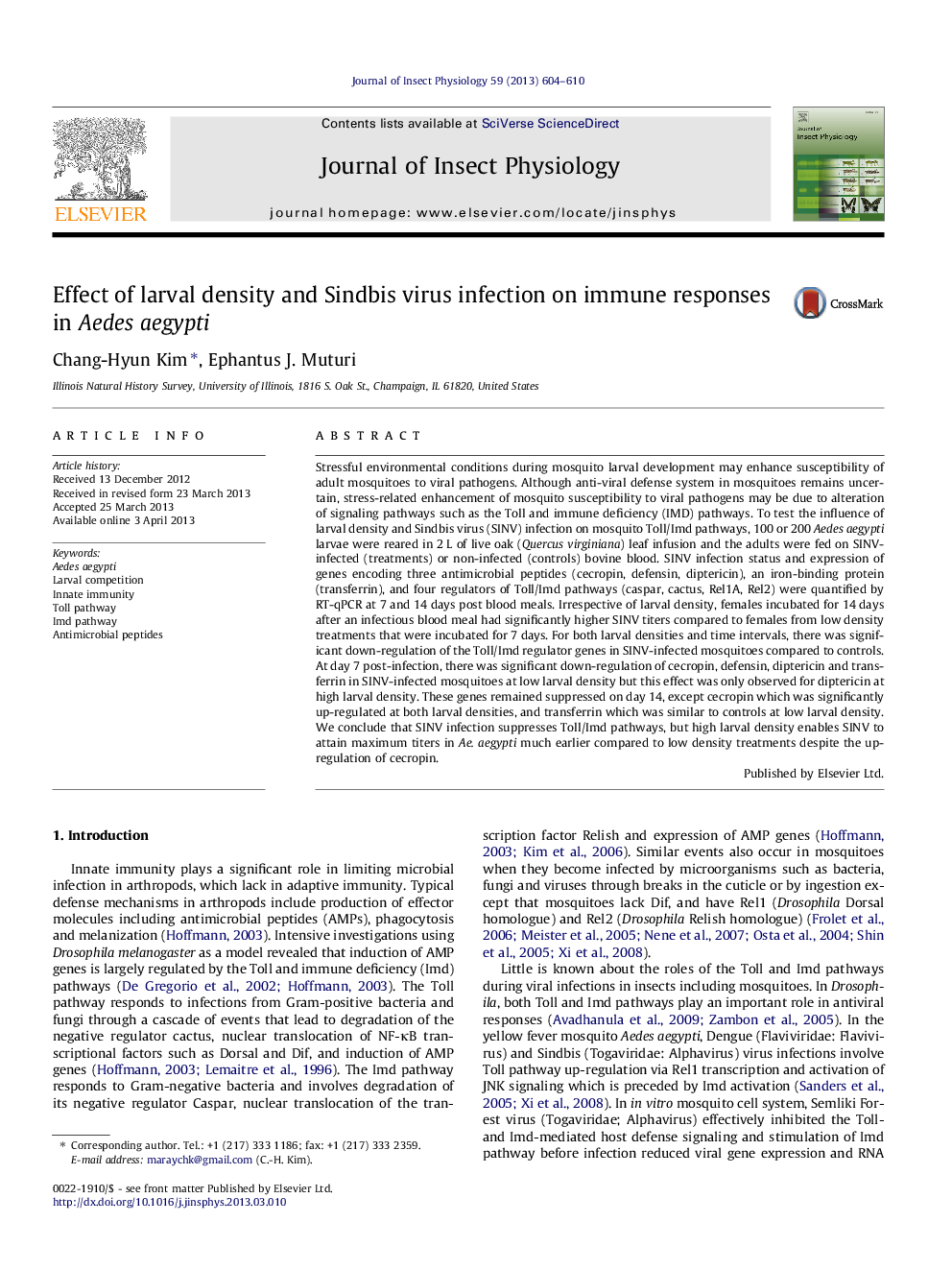| Article ID | Journal | Published Year | Pages | File Type |
|---|---|---|---|---|
| 2840567 | Journal of Insect Physiology | 2013 | 7 Pages |
•Effect of larval density and SINV-infection on Aedes aegypti immunity quantified.•SINV-infection suppresses Toll/Imd regulator genes.•At day 7, no effect of SINV-infection on 3 AMPs at high larval density.•At day 14, cecropin was significantly up-regulated regardless of larval densities.
Stressful environmental conditions during mosquito larval development may enhance susceptibility of adult mosquitoes to viral pathogens. Although anti-viral defense system in mosquitoes remains uncertain, stress-related enhancement of mosquito susceptibility to viral pathogens may be due to alteration of signaling pathways such as the Toll and immune deficiency (IMD) pathways. To test the influence of larval density and Sindbis virus (SINV) infection on mosquito Toll/Imd pathways, 100 or 200 Aedes aegypti larvae were reared in 2 L of live oak (Quercus virginiana) leaf infusion and the adults were fed on SINV-infected (treatments) or non-infected (controls) bovine blood. SINV infection status and expression of genes encoding three antimicrobial peptides (cecropin, defensin, diptericin), an iron-binding protein (transferrin), and four regulators of Toll/Imd pathways (caspar, cactus, Rel1A, Rel2) were quantified by RT-qPCR at 7 and 14 days post blood meals. Irrespective of larval density, females incubated for 14 days after an infectious blood meal had significantly higher SINV titers compared to females from low density treatments that were incubated for 7 days. For both larval densities and time intervals, there was significant down-regulation of the Toll/Imd regulator genes in SINV-infected mosquitoes compared to controls. At day 7 post-infection, there was significant down-regulation of cecropin, defensin, diptericin and transferrin in SINV-infected mosquitoes at low larval density but this effect was only observed for diptericin at high larval density. These genes remained suppressed on day 14, except cecropin which was significantly up-regulated at both larval densities, and transferrin which was similar to controls at low larval density. We conclude that SINV infection suppresses Toll/Imd pathways, but high larval density enables SINV to attain maximum titers in Ae. aegypti much earlier compared to low density treatments despite the up-regulation of cecropin.
Graphical abstractFigure optionsDownload full-size imageDownload as PowerPoint slide
